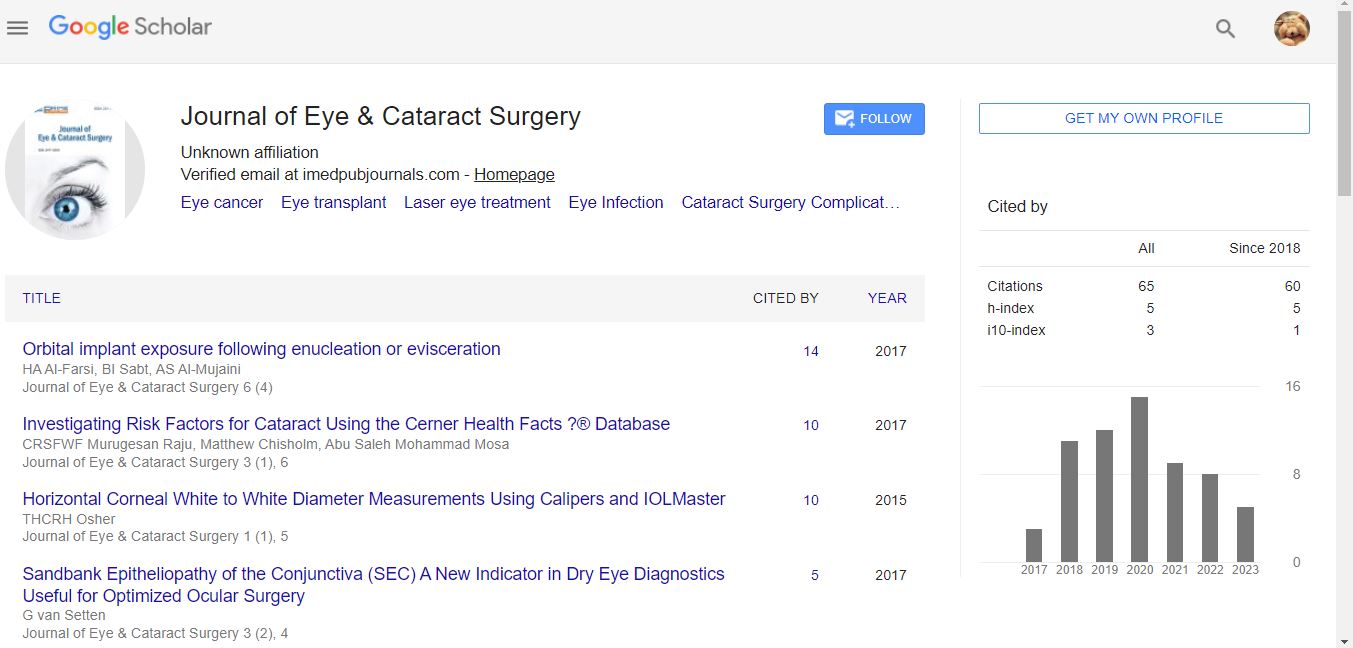Michael O’Keefe*
Consultant Ophthalmic Surgeon and Newman Professor of Clinical Ophthalmology, University College Dublin, Ireland
*Corresponding Author:
Michael O’Keefe
Consultant Ophthalmic Surgeon and Newman Professor of Clinical Ophthalmology
University College Dublin, Ireland
E-mail: mokeefe@materprivate.ie
Citation: Keefe MO (2016) There is Room for a Further Journal in the Expanding Area of Ophthalmology. J Eye Cataract Surg 1:1. doi: 10.21767/2471-8300.10001
Copyright: © 2016 Keefe MO, et al. This is an open-access article distributed under the terms of the Creative Commons Attribution License, which permits unrestricted use, distribution, and reproduction in any medium, provided the original author and source are credited.
In the next 10 years millions of patients will undergo refractive or cataract surgery. Increasingly we are seeing the merger of both as being intertwined. Corneal refractive surgery particularly for myopia is highly successful but hyperopia and presbyopia remains the challenge. The alternative is mainly clear lens exchange and multifocal IOL’s is clearly the better option. But this brings with it serious and potentially irreversible downside in a small percentage of patients including litigation. This is particularly a problem as many of the patients are young and active in the workplace. Whilst all procedures have risks, fixing some of the problems post lens exchange with multifocal IOL can be extremely challenging.
In the next 10 years millions of patients will undergo refractive or cataract surgery. Increasingly we are seeing the merger of both as being intertwined. Corneal refractive surgery particularly for myopia is highly successful but hyperopia and presbyopia remains the challenge. The alternative is mainly clear lens exchange and multifocal IOL’s is clearly the better option. But this brings with it serious and potentially irreversible downside in a small percentage of patients including litigation. This is particularly a problem as many of the patients are young and active in the workplace. Whilst all procedures have risks, fixing some of the problems post lens exchange with multifocal IOL can be extremely challenging.
The use of femto laser for cataract surgery has moved with the time and pace but there is no clear gain that it is better than phaco. It is great but expensive technology and very likely will replace phaco. However, with cataract epidemic on the horizon reimbursement will be the major headache for the surgeons and hospitals unless the cost of the technology decreases. Other areas of ophthalmology are also seeing exciting changes particularly macular degeneration, retinopathy of prematurity and the treatment of amblyopia.
The introduction of a new journal that can highlight these new exciting areas in an unbiased and readable way is to be welcomed.

